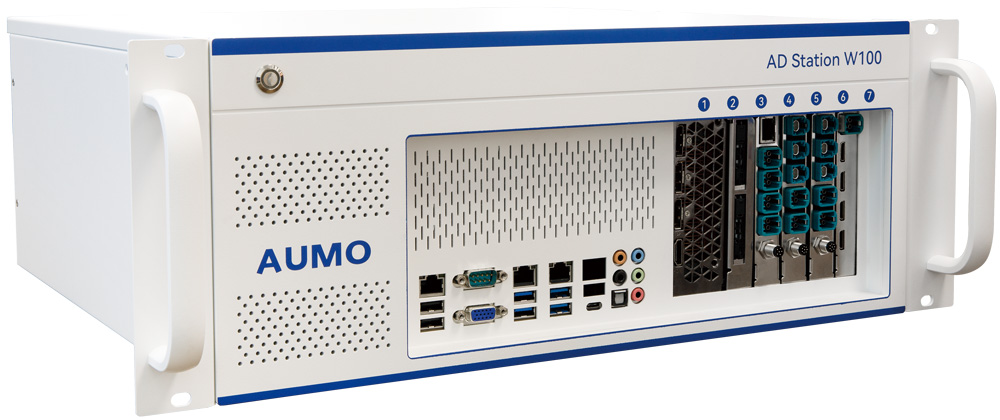2024-08-12
With the transformation of automotive electronic and electrical architecture from distributed to centralized, the application of System on Chip (SoC) in vehicles is becoming increasingly common and occupies a core position in modern automobiles. These chips integrate multiple functions such as computing, communication, control, and multimedia processing, and are key to achieving advanced features such as autonomous driving, intelligent cockpit, and vehicle networking。
The accuracy and real-time performance of video link data transmission and display are directly related to the driver's visual experience and driving safety, and are a major indicator for measuring the performance of on-board SoC chips. In order to ensure the reliable operation of chips in practical automotive applications, strict testing is necessary to verify their performance and durability. Therefore, the in vehicle SoC chip video link testing system has emerged.
At present, the testing systems on the market can basically evaluate key parameters such as video transmission delay, bandwidth, resolution, color accuracy, and simulate various working conditions such as temperature, humidity, vibration, electromagnetic interference, etc. However, faced with increasingly complex video links and high verification costs, car manufacturers are beginning to pursue verification systems with higher bandwidth, lower latency, more secure protocols, and more flexibility.
In this context, AUMO has collaborated with X-EPIC to create a vehicle mounted SOC chip video link testing system. The system consists of X-EPIC Huajie HuaPro P2E dual-mode hardware verification system and AUMO W100 autonomous driving data processing platform, forming a highly integrated and comprehensive testing solution. It supports vehicle mounted customers to verify SoC chip functions and various interfaces such as MIPI video, and supports customers to conduct system level testing of software and hardware combined unmanned driving and intelligent cockpit in front of silicon, which can help customers reduce manual investment, shorten chip verification cycles, and accelerate product launch.

(P2E dual-mode hardware verification system+W100 autonomous driving data processing platform)
Case presentation
Vehicle SoC chip video link testing system
The W100 is equipped with a car mounted video injection card S2, which provides 4-channel 1080P YUV422 GMSL data injection. The video frame rate is adjusted through the downstream sub card, and data transmission uses the GMSL protocol. The video injection card S2 performs video data conversion, image display, and video frame rate control, converting the video data into a data stream and transmitting it to P2E through the QSFP28 optical port.
The injected video of the video injection card S2 is displayed on the monitor through DP, and the back pressure is processed internally to control the video input of the video injection card S2 and achieve frame rate control.
The data output to the display through the video card DP interface is the same frame of data as the image received by P2E. One data output is sent to the DUT and one to the Ethernet. The data output to the Ethernet is transmitted to the PC and displayed by the virtual network APP.
The combination of P2E and W100 forms a closed-loop testing system. The P2E system is responsible for verifying the correctness and performance of chip design, while the W100 platform simulates real application environments to verify the performance of chips in actual work scenarios. The combination of the two can accelerate the development cycle of on-board SoC chips and provide guarantees for the safe implementation of autonomous driving technology.
Product Analysis
The AUMO W100 autonomous driving data processing platform has high-performance computing and data processing capabilities, which can achieve functions such as camera video data acquisition and video injection. It supports customers to deploy simulation software environments to W100 servers and build a more complete hardware in the environment simulation testing environment.
The W100 can be equipped with a 16 channel vehicle mounted camera GMSL acquisition card A16, an 8-channel vehicle mounted video injection card S2/S2+, and a 4-channel vehicle mounted video injection card S1, achieving synchronous injection of multi-channel acquisition data and virtual scene data. It is compatible with various mainstream serial and de serial chips, and the system can flexibly adapt to different autonomous driving schemes.

The combination of P2E and W100 forms a closed-loop testing system. The P2E system is responsible for verifying the correctness and performance of chip design, while the W100 platform simulates real application environments to verify the performance of chips in actual work scenarios. The combination of the two can accelerate the development cycle of on-board SoC chips and provide guarantees for the safe implementation of autonomous driving technology.